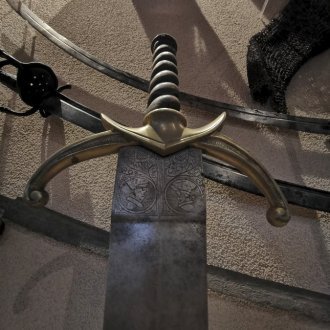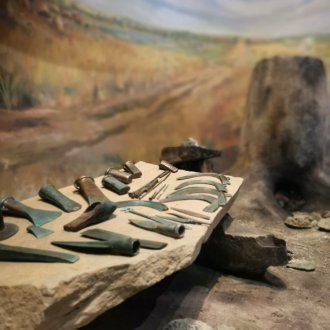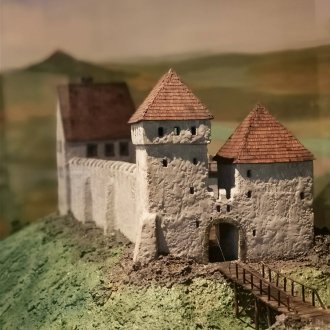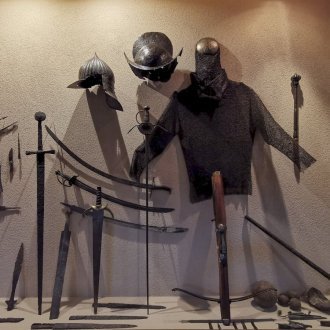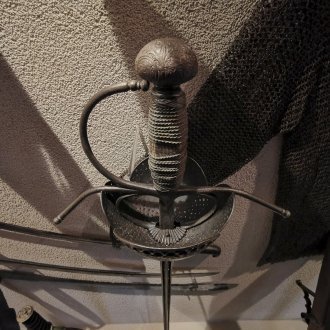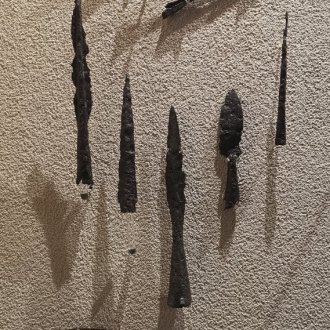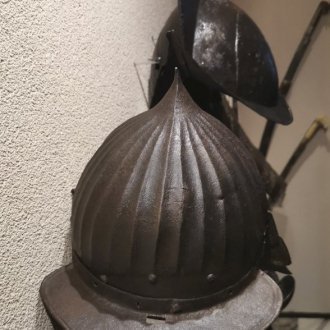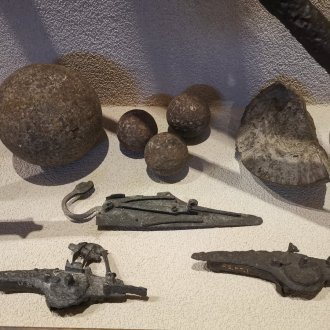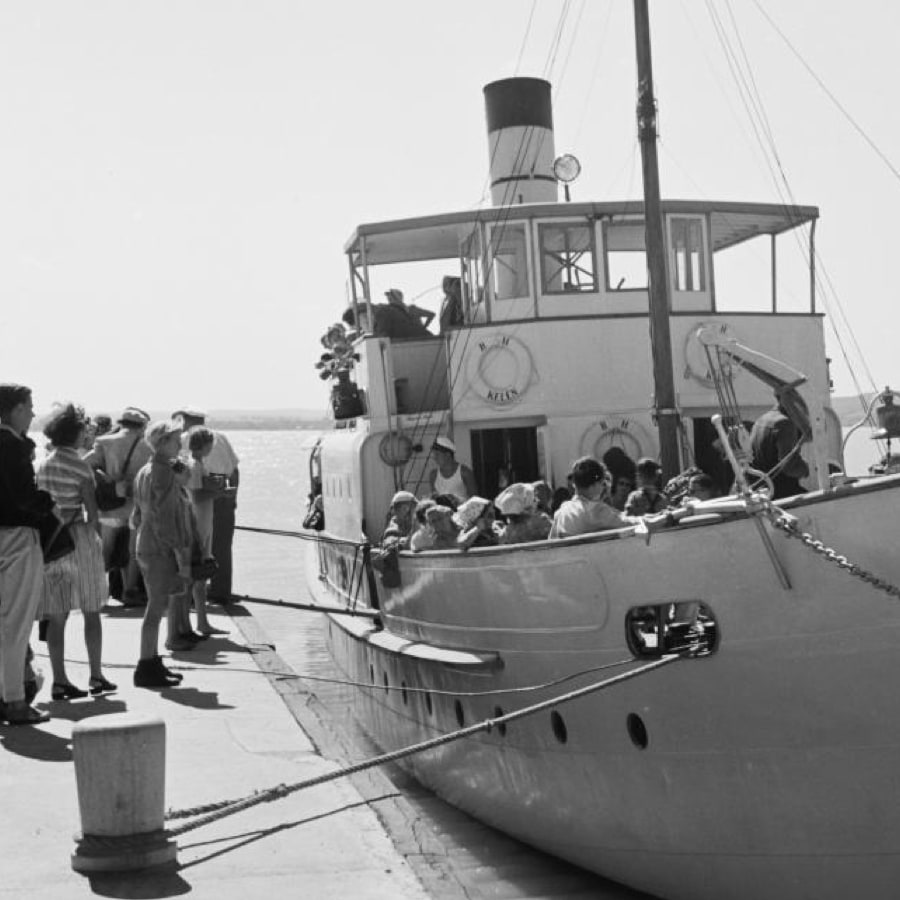We present not only the medieval fortifications that can still be seen today, but also the forgotten castles which can only be explored with the help of the “science of spades”.
In the exhibition, the bronze finds of Várvölgy-Nagylázhegy originate from one of the largest Late Bronze Age fortified settlements in the vicinity of Lake Balaton, and contain an ensemble of finds with a total weight of almost 80 kilograms. But the land has yielded not only bronze treasures here for archaeologists: two significant gold treasures were also unearthed on the heights of Várvölgy. The most beautiful and significant artefacts of the treasure, found later, are the hair braids which weighs more than 40 grams each. You may also observe these in our exhibition.
As well as you may observe the fortified settlements around Lake Balaton which were not established on heights, but next to the natural crossing points of Lake Balaton. Archaeological findings also come from the area of Vörs and Balatonmagyaród, and include bowls, urns and costumes, and they reveal the life and customs of the inhabitants of these settlements.
Do you know that there were once Celts living around Lake Balaton?
As you are moving forward, you will arrive in the Iron Age in time, and geographically to the Tátika hill near Zalaszántó. At the foot of this hill, there is one of the largest, partly unexplored Early Iron Age fortified settlements at Lake Balaton, where hundreds of mound graves are located. Perhaps few people know, but there were once Celts living around Lake Balaton: in the Late Iron Age, tribal strives and external danger led to the establishment of highland settlements. The most significant Celtic oppiduma around Lake Balaton are located near Balatonföldvár and Tihany.
Where is the largest Roman fortress around Lake Balaton?
Continuing on the Roman road, you will arrive in the province of Pannonia, where several very similar monumental fortifications were built during the 4th century AD. The largest Late Roman fortress around Lake Balaton area is located at Fenékpuszta, 6 km south of Keszthely. In diorama, we present the reconstruction of a part of the fortress and the archaeological finds unearthed in the area.
Handicraft and agricultural tools, household utensils, jewelry, and clothing artefacts tell the story of the populaces living in the area of the fortress during the 4-9th centuries. Do you know that the walls and buildings of this castrum served as a “quarry” for the constructions of Keszthely and the surrounding area?
Despite centuries of research, Fenékpuszta is far from being an open book for archaeologists: there are still many undiscovered buildings in the fortress and thousands of graves in the cemeteries.
In our exhibition, we illustrate the location of fortified settlements, fortifications and castles in the vicinity of Lake Balaton from prehistoric to Turkish times on a three-dimensional map, we will show what Rezi Castle might have looked like in the 16th century, and present the weapons of the medieval and Turkish-time armies.

